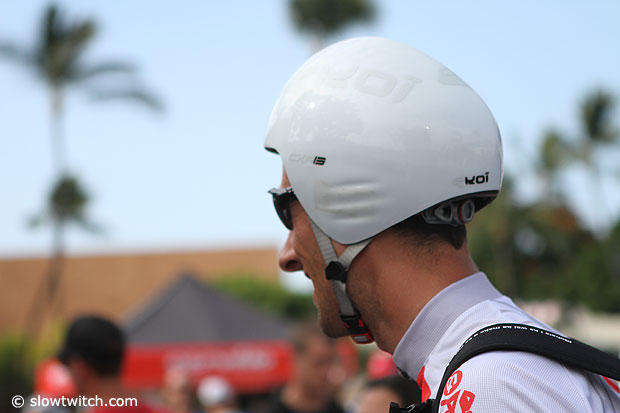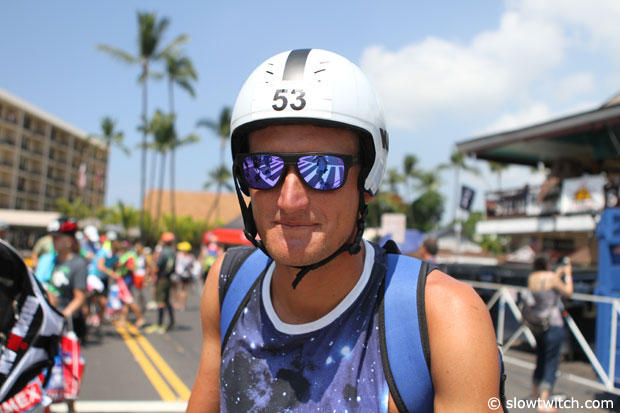Winners and Losers: Helmets
Obviously Rudy Project is a winner based on the Kona helmet count. It again easily tops the field, as it has for the last several years.
Some folks will cry foul, arguing that the count is not reflective of a market truth and that's certainly an accurate statement. But it didn't take long after I started counting bikes on the pier and publishing them on Rooworld.com (on the first commercial bike company website, in 1993, the online presence for Quintana Roo) that folks started to think about how to get more of their product on or under participants in the race.
Rudy Project has taken that effort further than anyone else. So, yes, there's more Rudy in Kona, per capita, than there is Rudy in the rest of the world. Still, when you're talking about a technical product that must perform aerodynamically, and a contact point that must be comfortable, I don't think too many people are going to place their Kona experience in jeopardy by a product that is a gamble, or that they don't like. So, bravo Rudy.
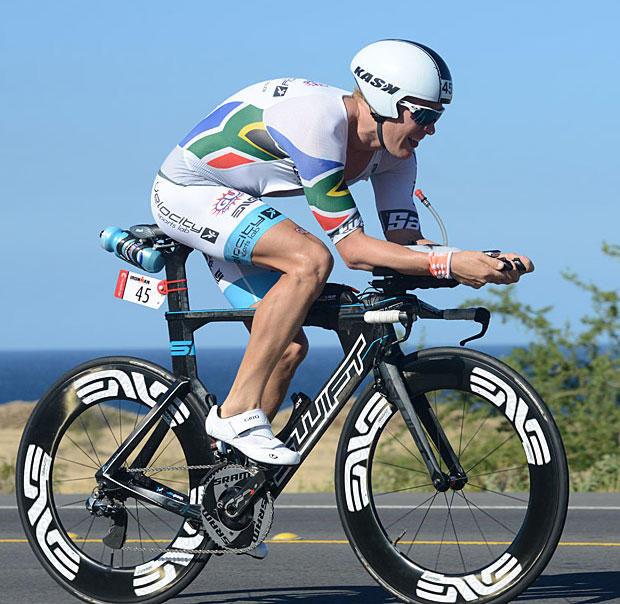
This is also the only European helmet brand to really crack into the tri market in a big way. If you look at where Rudy sits in the "real world" it might be instructive to look at helmet polls we take on Slowtwitch from time to time. A year ago we asked "What helmet brand do you anticipate most often using while racing in triathlons?" Thirty-three percent of you said Giro and last week an identical number said Giro. Giro is neither keeping nor losing share, it's on the heads of just about 1 in every 3 of you. This, although Giro lost share in Kona year-over-year, falling about 70 helmets back to 350 from roughly 420 in 2013.
Rudy lost a little from last year to this in our poll, going from 21 percent to 17 percent, but still a very solid showing considering that all European companies save Rudy Project and Lazer were listed in the "other" category, which totaled 6 percent. That means Ekoi (which won the Ironman last year aboard Frederik Van Lierde's head), Casco, Kask, Catlike and others, in total, did not exceed 6 percent in our recent helmet poll.
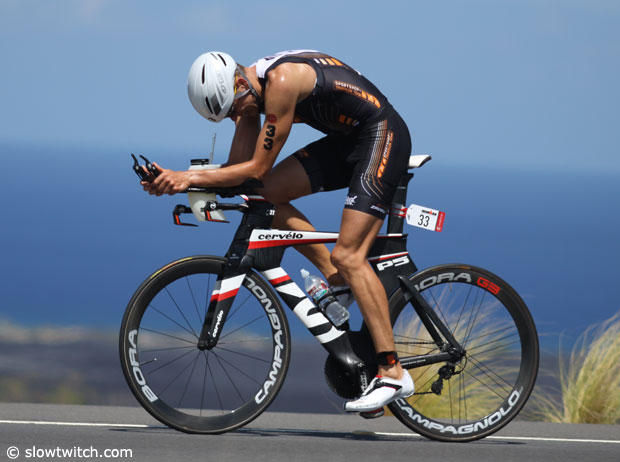
These other European companies are clearly, to me, the losers in our reader polls, but not necessarily in the Kona helmet count. A lot of Kasks are aboard people who aren't (or aren't primarily) English speakers, don't follow North American triathlon, don't read Slowtwitch and don't take our polls. Kask is fairly well represented in Kona because of the heavy European participation in the race, and this is the one race where USA Triathlon gives Europeans a pass on the CPSC helmet cert requirement. Ekoi didn't do well, falling from 18 helmets in the race last year to 3 this year, unless the person doing the counting on the pier just didn't recognized the helmet. Kask moved from 39 helmets last year to 67 this year. Is it possible that some Ekois were counted as Kasks? Or did Ekoi crater even though it was the helmet on last year's winner?
The other European helmet company registering a pulse in our polls a year ago was the Belgian brand Lazer, always around 7 or 8 percent every time we poll helmets, and it had 80-something helmets in Kona both last year and this.
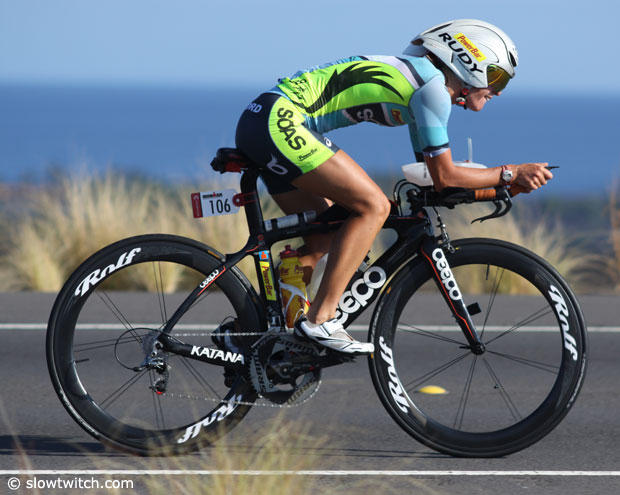
Why not more European helmets in the U.S., in our reader polls? Part of it has to do with certifications. You can't sell a helmet in the U.S. unless it's CPSC-certified. Not only are there a lot of helmet certifications in the world (most Euro brands are CE-certified) the U.S. is one of the few countries that does not allow helmet certification reciprocity. Not if the race is sanctioned by USA Triathlon. Kona is the only place this is allowed, at least in the age group field.
But that might change. There's a movement afoot to allow for helmet cert reciprocity (it's not illegal to race in the U.S. with a CE or Australian or other helmet certification, only to sell that helmet). There's also a movement for standardization of triathlon rules across country lines, and that by itself argues for helmet reciprocity, since most countries have in their rules the ability to use a helmet that passes a standard in the country in which the athlete resides. Once that helmet reciprocity occurs here in the U.S. companies like Ekoi and Kask might at least be able to sell into the U.S. through non-U.S. sellers (like Wiggle and Chain Reaction), rather than having to obtain CPSC certification. Some of these companies make CPSC-certified helmets already. I would be surprised if we don't see some of these helmets inch up in our polls over the next couple of years.
Specialized makes a terrific helmet in the Evade and it adds to its solid place in Kona, moving from 140 helmets last year to 220 this year. It moved from 7 percent in our Slowtwitch poll last year to just shy of 10 percent last week.
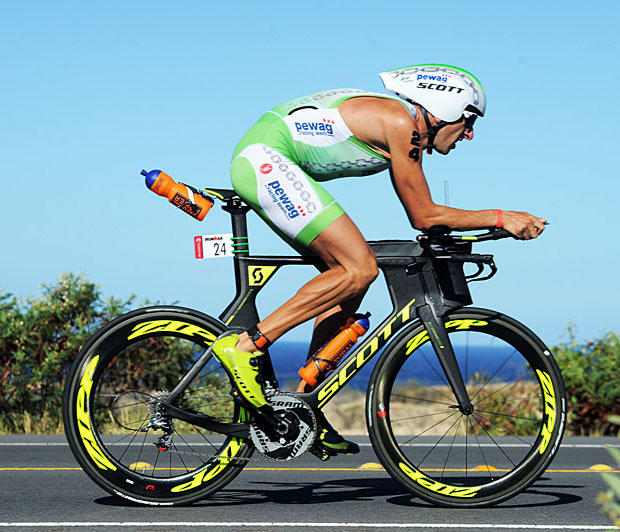
The other very prominent helmet company both in Kona and in our polls is Louis Garneau and its P-09 and Vorttice are big favorites. Slowtwitchers chose this brand at a 15 percent rate last year and it's up to 19 percent this year. Its totals in Kona increased from about 140 last year to about 150 this year.
The other "winner" in Kona was the truncated or snub-tailed helmet style. Maybe slightly fewer long-tail helmets like the LG Superleggera and Giro Advantage 2 are in the race these days. Giro scored a hit with its Air Attack, and this semi-aero style seems to be a coming motif.


